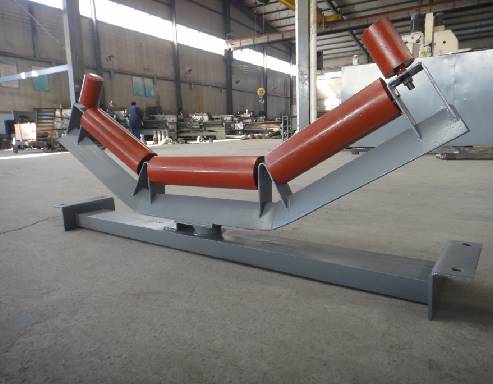 Afrikaans
Afrikaans  Albanian
Albanian  Amharic
Amharic  Arabic
Arabic  Armenian
Armenian  Azerbaijani
Azerbaijani  Basque
Basque  Belarusian
Belarusian  Bengali
Bengali  Bosnian
Bosnian  Bulgarian
Bulgarian  Catalan
Catalan  Cebuano
Cebuano  Corsican
Corsican  Croatian
Croatian  Czech
Czech  Danish
Danish  Dutch
Dutch  English
English  Esperanto
Esperanto  Estonian
Estonian  Finnish
Finnish  French
French  Frisian
Frisian  Galician
Galician  Georgian
Georgian  German
German  Greek
Greek  Gujarati
Gujarati  Haitian Creole
Haitian Creole  hausa
hausa  hawaiian
hawaiian  Hebrew
Hebrew  Hindi
Hindi  Miao
Miao  Hungarian
Hungarian  Icelandic
Icelandic  igbo
igbo  Indonesian
Indonesian  irish
irish  Italian
Italian  Japanese
Japanese  Javanese
Javanese  Kannada
Kannada  kazakh
kazakh  Khmer
Khmer  Rwandese
Rwandese  Korean
Korean  Kurdish
Kurdish  Kyrgyz
Kyrgyz  Lao
Lao  Latin
Latin  Latvian
Latvian  Lithuanian
Lithuanian  Luxembourgish
Luxembourgish  Macedonian
Macedonian  Malgashi
Malgashi  Malay
Malay  Malayalam
Malayalam  Maltese
Maltese  Maori
Maori  Marathi
Marathi  Mongolian
Mongolian  Myanmar
Myanmar  Nepali
Nepali  Norwegian
Norwegian  Norwegian
Norwegian  Occitan
Occitan  Pashto
Pashto  Persian
Persian  Polish
Polish  Portuguese
Portuguese  Punjabi
Punjabi  Romanian
Romanian  Russian
Russian  Samoan
Samoan  Scottish Gaelic
Scottish Gaelic  Serbian
Serbian  Sesotho
Sesotho  Shona
Shona  Sindhi
Sindhi  Sinhala
Sinhala  Slovak
Slovak  Slovenian
Slovenian  Somali
Somali  Spanish
Spanish  Sundanese
Sundanese  Swahili
Swahili  Swedish
Swedish  Tagalog
Tagalog  Tajik
Tajik  Tamil
Tamil  Tatar
Tatar  Telugu
Telugu  Thai
Thai  Turkish
Turkish  Turkmen
Turkmen  Ukrainian
Ukrainian  Urdu
Urdu  Uighur
Uighur  Uzbek
Uzbek  Vietnamese
Vietnamese  Welsh
Welsh  Bantu
Bantu  Yiddish
Yiddish  Yoruba
Yoruba  Zulu
Zulu bend pulley and snub pulley
Understanding Bend Pulleys and Snub Pulleys
Bend pulleys and snub pulleys are essential components in the field of mechanical engineering, particularly in conveyor systems and various industrial applications. Both types of pulleys serve important functions in controlling the direction of belt movements, improving efficiency, and reducing wear on machinery.
Bend Pulleys
Bend pulleys, also known as bend rollers, are designed to change the direction of a conveyor belt. When a conveyor belt travels around a bend or curvature, bend pulleys guide the belt in the desired direction while providing support to maintain its integrity and alignment. They are typically positioned at specific points in a conveyor system where the belt needs to transition through an angle, ensuring smooth and optimal movement.
One of the key benefits of using bend pulleys is that they can minimize the tension exerted on the belt as it changes direction. By reducing friction, bend pulleys prolong the lifespan of the belt and decrease maintenance costs. Additionally, they help to maintain the tension required for efficient operation. The design of bend pulleys generally includes a robust structure to withstand the forces generated by the moving belt, ensuring durability and reliability.
Snub Pulleys
bend pulley and snub pulley

Snub pulleys, on the other hand, are used primarily to adjust the tension in a conveyor belt system. These pulleys, which are often installed in a configuration where they can provide extra contact between the belt and the driving pulley, are crucial for maintaining the correct tension. Proper belt tension is vital for efficient operation, as it prevents slippage and ensures reliable power transfer.
The primary function of a snub pulley is to increase belt wrap around the drive pulley. By enhancing the contact area, snub pulleys improve the grip the belt has on the drive, which assists in preventing slipping under heavy loads. This feature is particularly important in industries where heavy materials are handled, as it maximizes the conveyor system's effectiveness.
In addition to their role in tension adjustment, snub pulleys also contribute to the overall flexibility and adaptability of conveyor systems. By allowing for easy adjustments in tension, they facilitate maintenance and adjust operations as requirements change, which is an invaluable asset in dynamic industrial environments.
Conclusion
In summary, both bend pulleys and snub pulleys play crucial roles in the overall functioning of conveyor systems. Bend pulleys improve the direction and support of a conveyor belt, aiding in the efficiency of material transportation. Meanwhile, snub pulleys ensure the appropriate tension, preventing issues like slippage and wear. By understanding the functions and advantages of these pulleys, engineers and operators can design and maintain more effective and reliable conveyor systems, optimizing performance in various industries. Proper implementation and regular maintenance of bend and snub pulleys can lead to significant improvements in productivity and cost efficiency.
-
Revolutionizing Conveyor Reliability with Advanced Rubber Lagging PulleysNewsJul.22,2025
-
Powering Precision and Durability with Expert Manufacturers of Conveyor ComponentsNewsJul.22,2025
-
Optimizing Conveyor Systems with Advanced Conveyor AccessoriesNewsJul.22,2025
-
Maximize Conveyor Efficiency with Quality Conveyor Idler PulleysNewsJul.22,2025
-
Future-Proof Your Conveyor System with High-Performance Polyurethane RollerNewsJul.22,2025
-
Driving Efficiency Forward with Quality Idlers and RollersNewsJul.22,2025





























